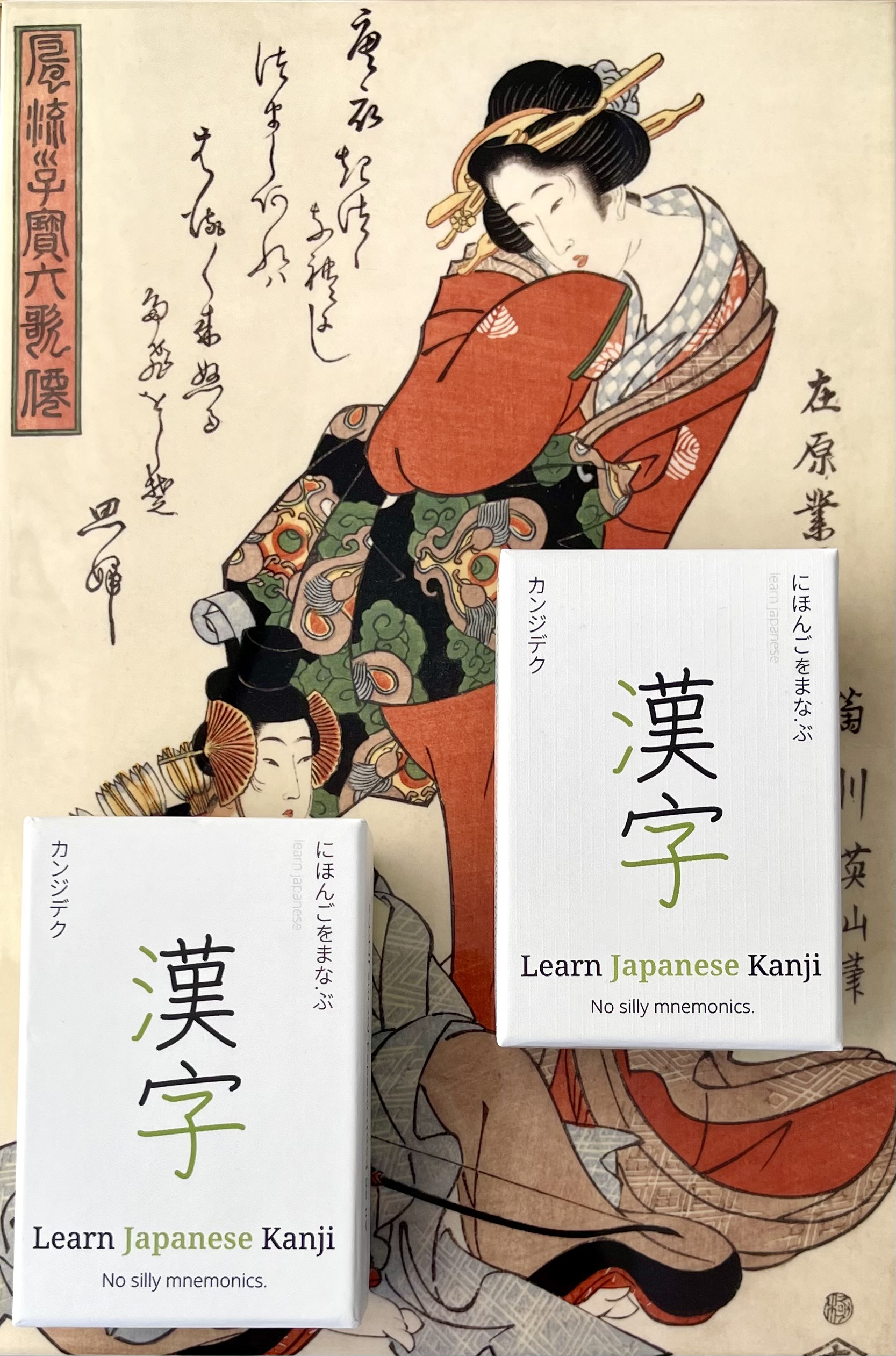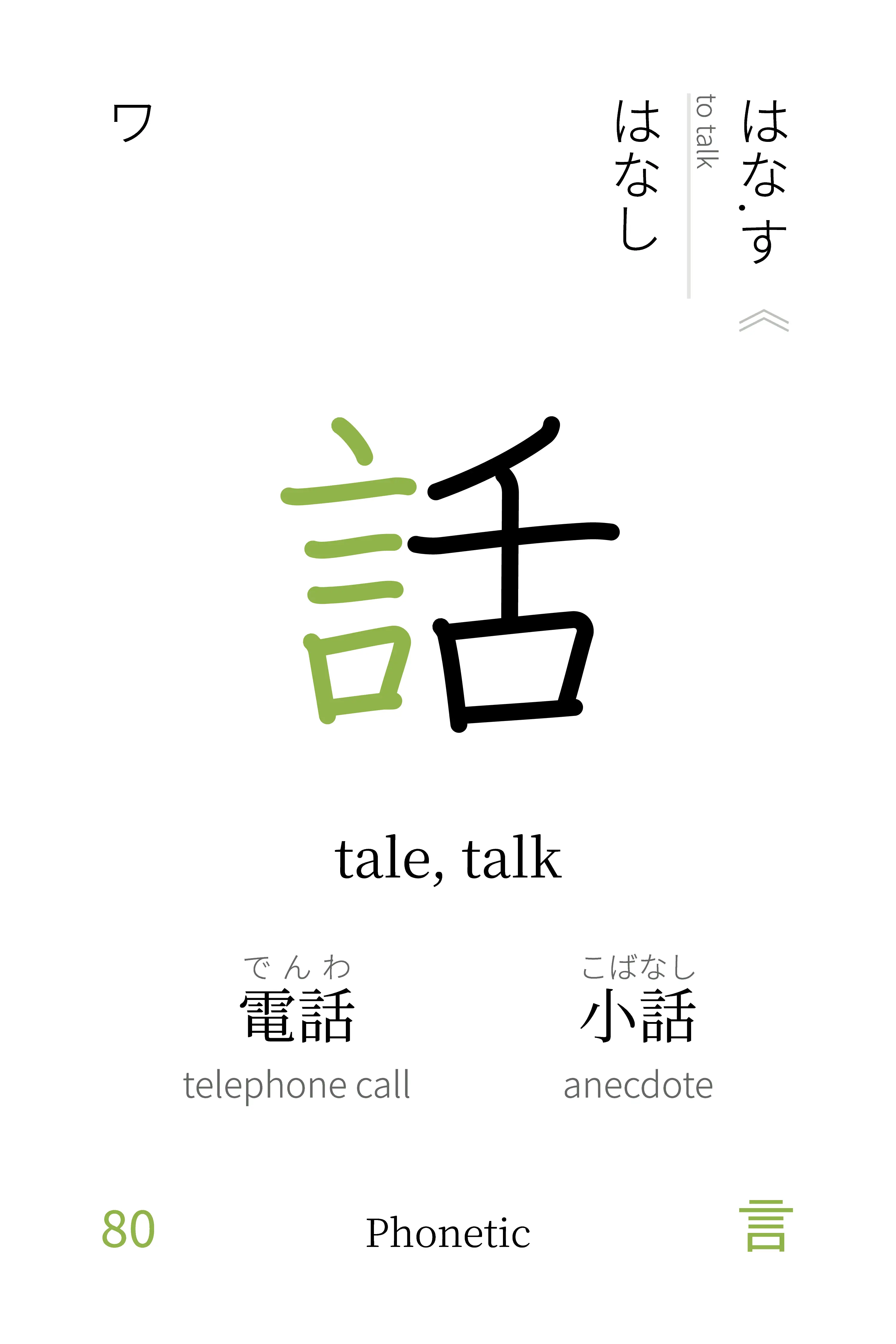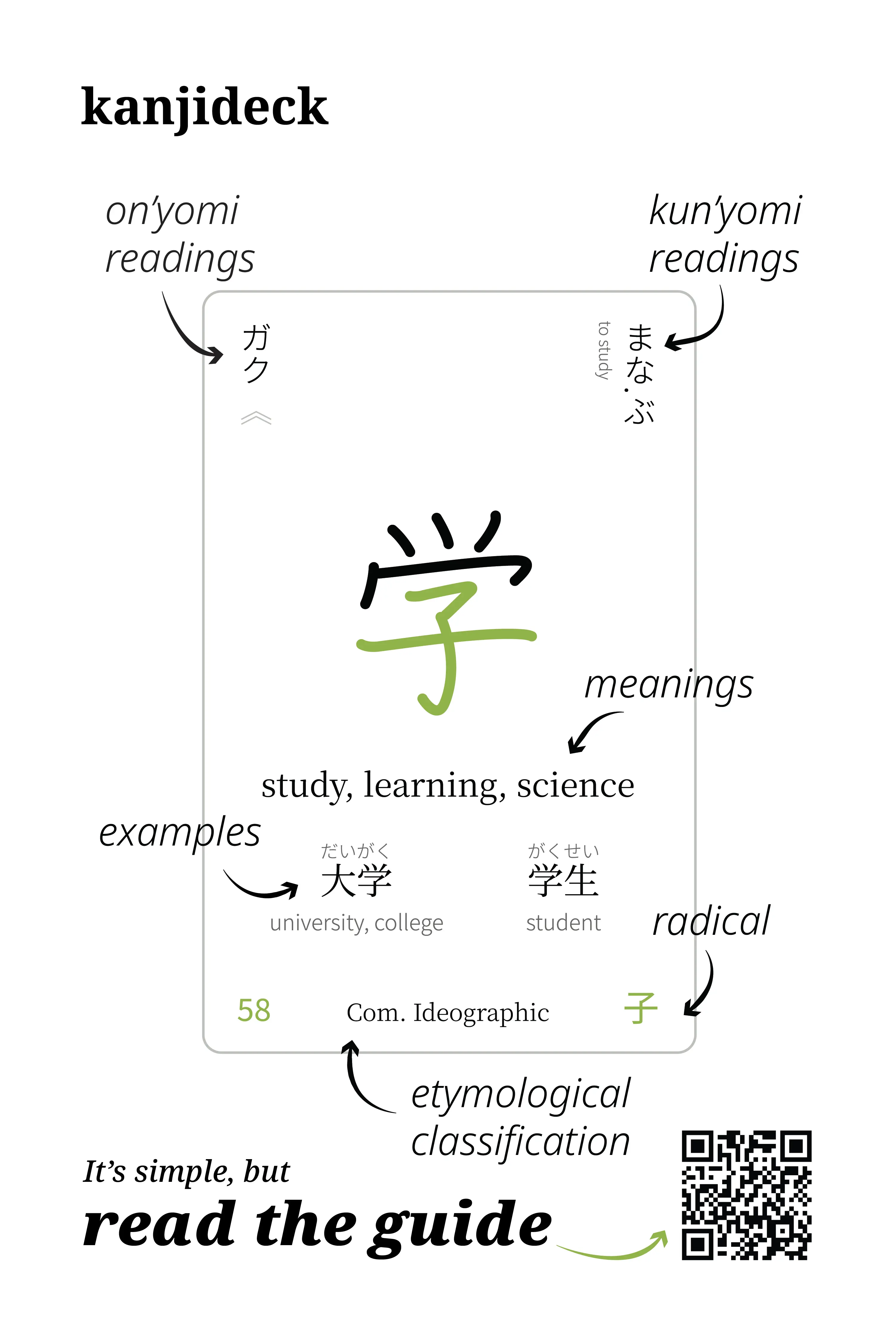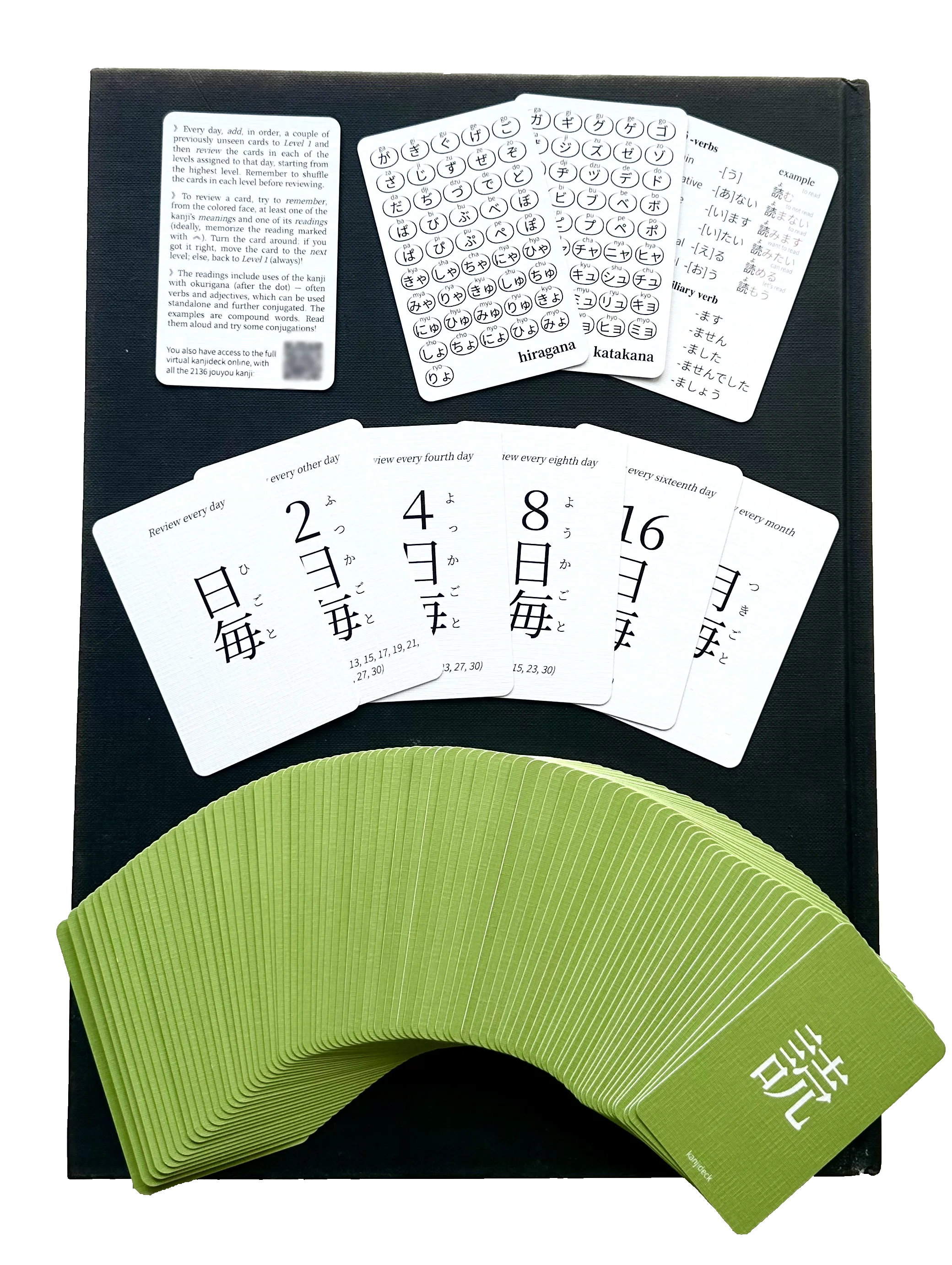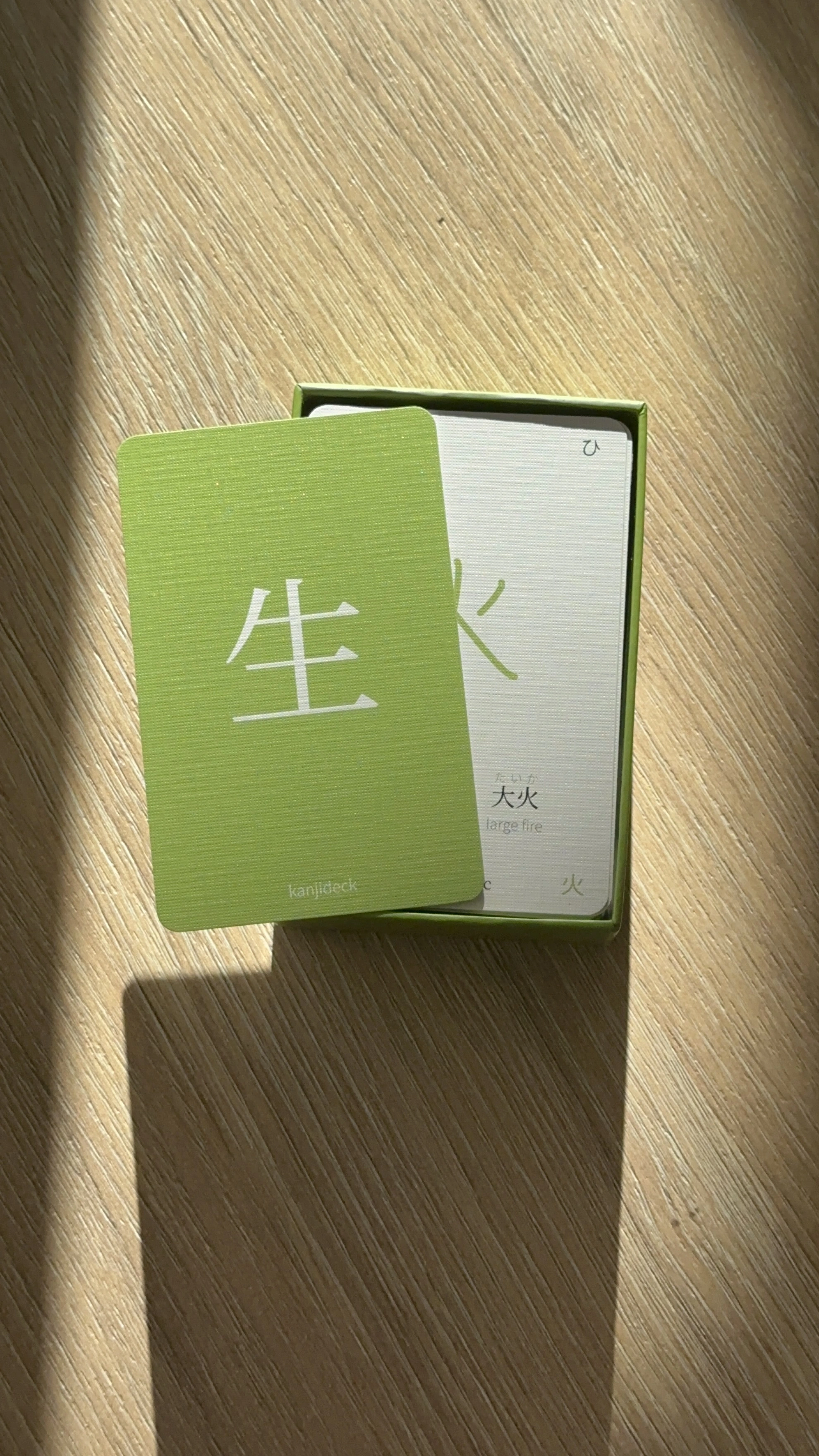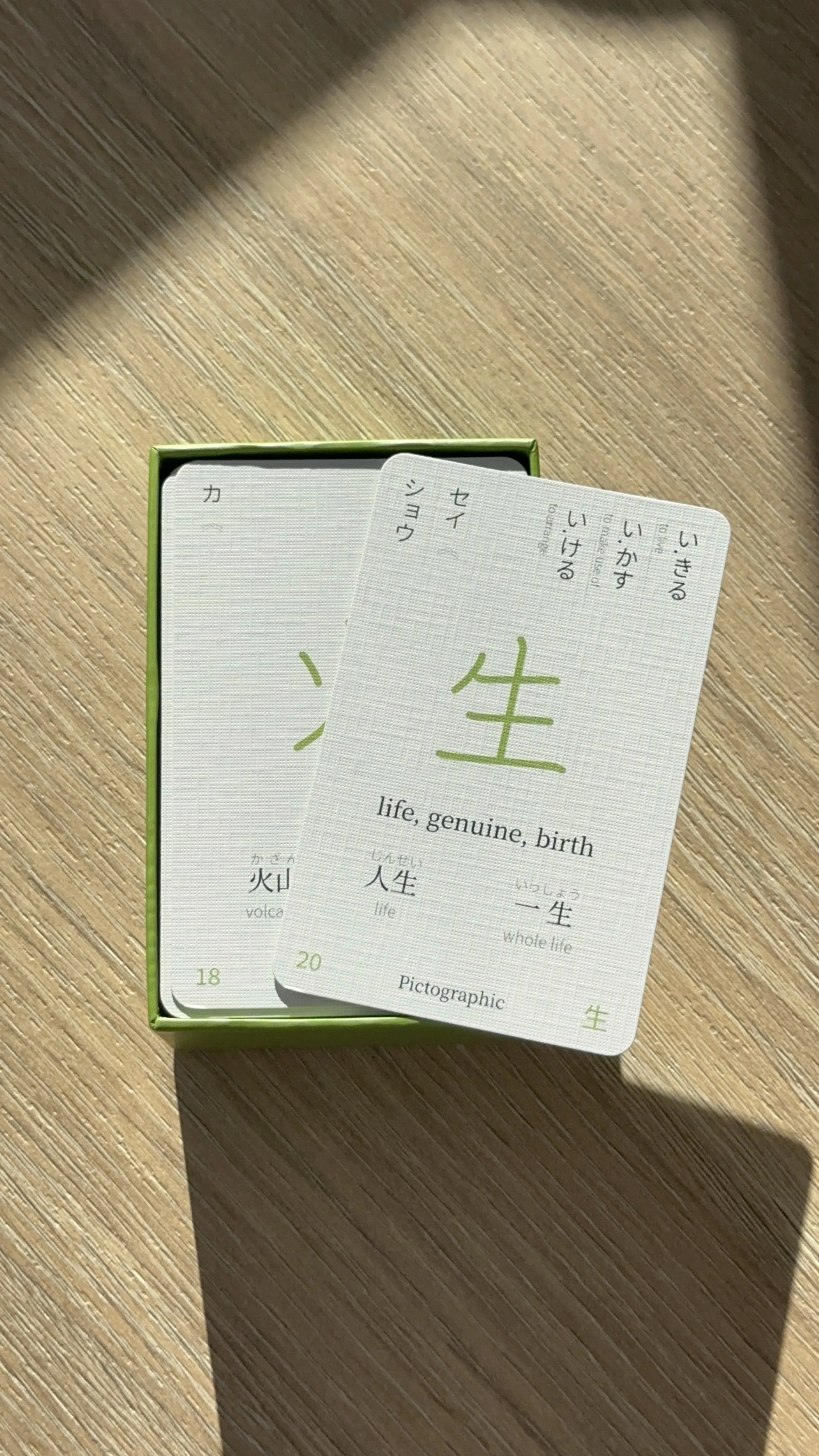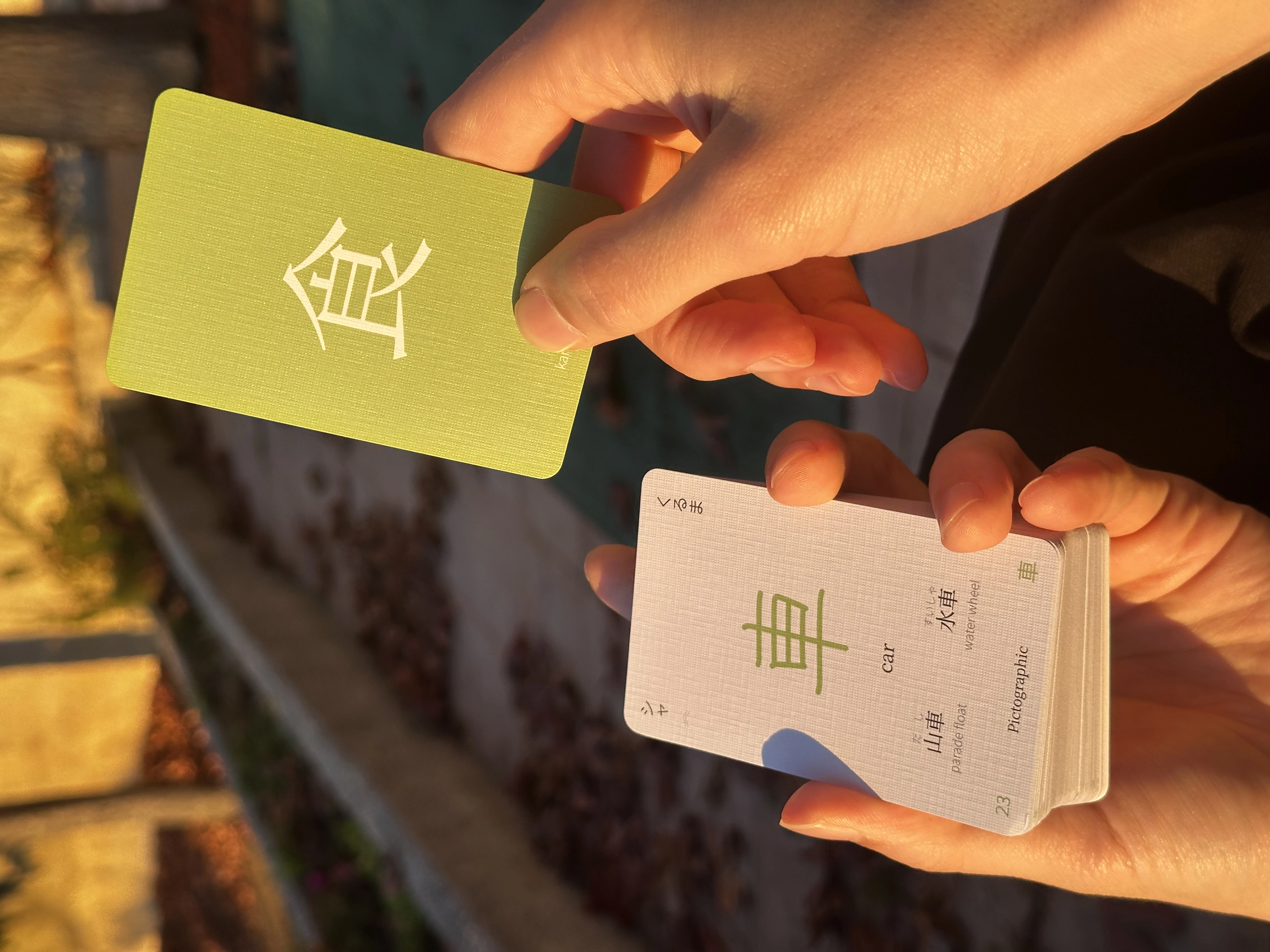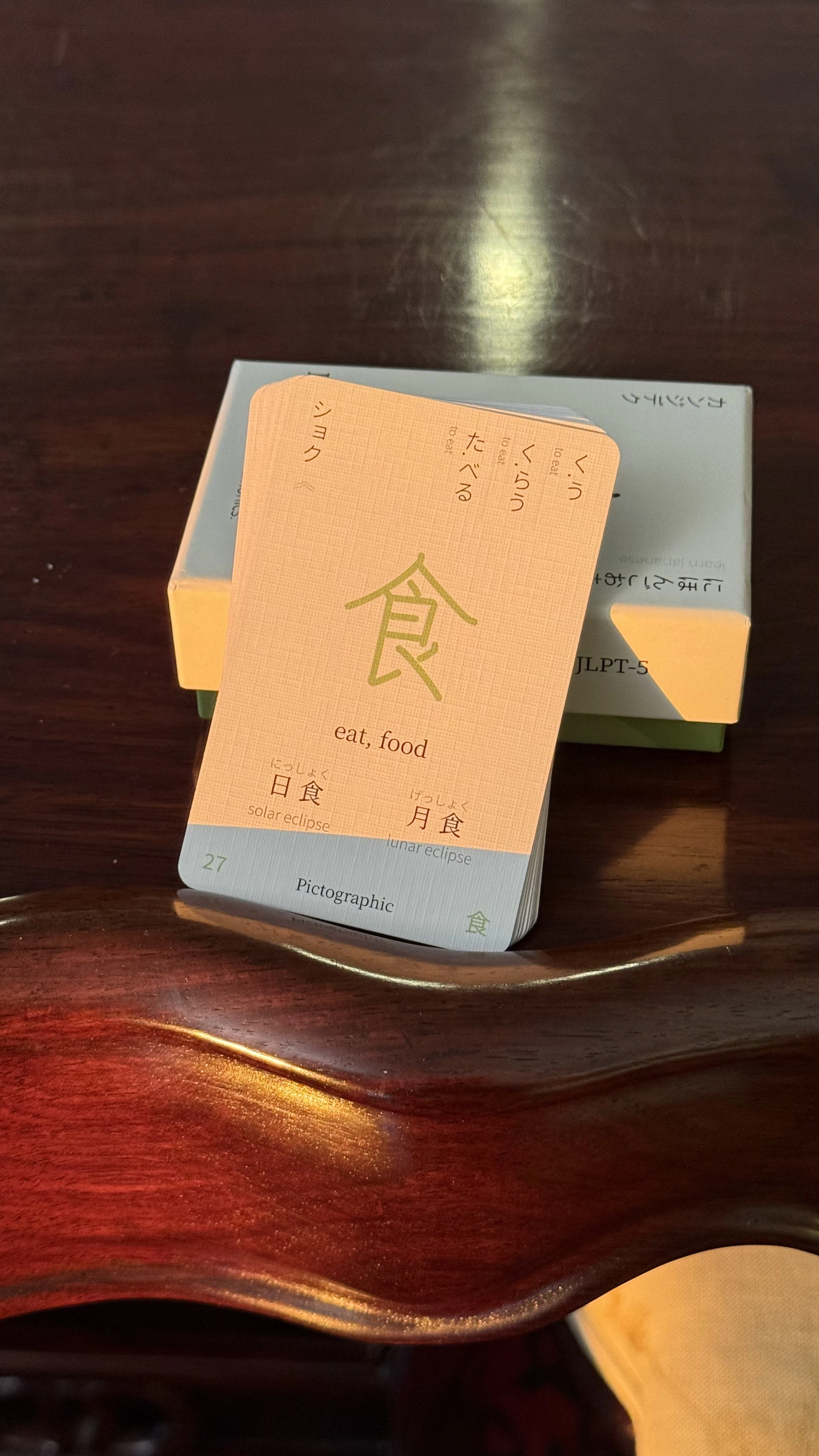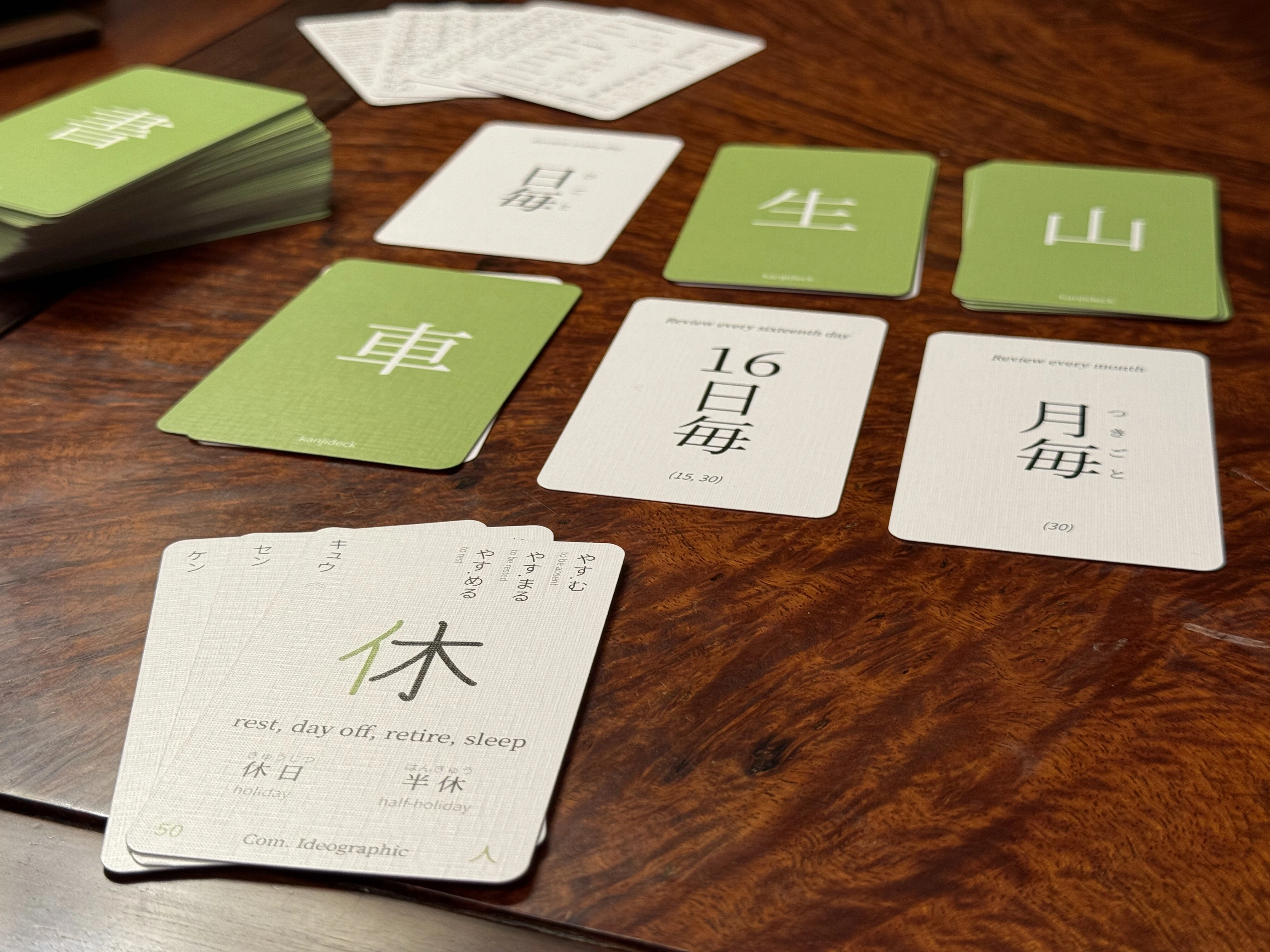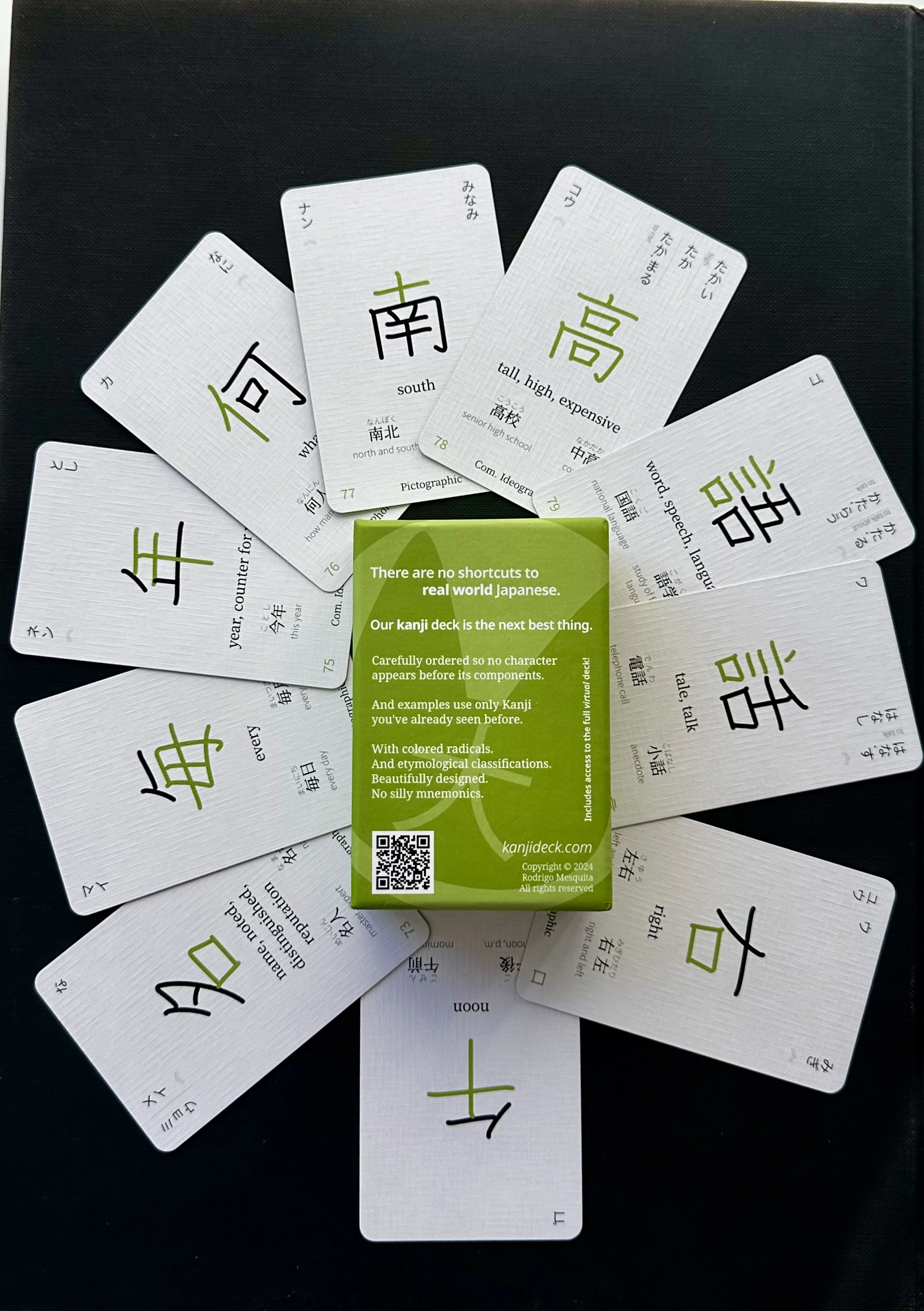Kanjideck is a no-shortcuts deck for learning Japanese Kanji with the super-power of spaced repetition to study smarter, not harder.
The most challenging part of Japanese is learning the 2136 Kanji characters one needs to be fluent. While it sounds like way too many characters, using active recall and spaced repetition makes it possible to learn them efficiently, in a reasonable amount of time.
However, spaced repetition for learning Japanese is typically synonymous with brute-forcing all characters into your brain via the use of silly mnemonics. Most resources use them extensively and ignore the readings meanings, examples, components, or etymology. And we've found that's not a very good way to learn.
That's why we created a deck of cards built around spaced repetition that has a focus on intentional learning and making each Kanji as immediately useful as possible (through verb and adjective readings, and compound examples with Kanji that you already know)! Read the guide.
The deck will be available in both digital and physical forms. Worldwide shipping.
